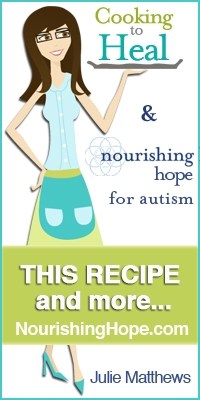 • 1/4 cup ghee (or a lard and expeller pressed coconut oil blend if you are not certain your ghee has all the milk solids removed)
• 2-4 tablespoons sorghum flour or sweet rice flour
• 2 cups of pan drippings strained through cheesecloth to remove bits (to make a large volume of drippings, add several cups of water to the bottom of the roasting pan, along with chopped onion and celery that you can place in and around the bird)
• Salt to taste
After gently melting ghee in a pot, sprinkle 2 Tablespoons of flour into ghee and mix well by stirring it vigorously. Add more flour until the roux is pasty in texture. Add pan drippings (or stock if you don’t have drippings) a little at a time, mixing vigorously with a whisk until all of the drippings have been incorporated. Add salt to taste.
• 1/4 cup ghee (or a lard and expeller pressed coconut oil blend if you are not certain your ghee has all the milk solids removed)
• 2-4 tablespoons sorghum flour or sweet rice flour
• 2 cups of pan drippings strained through cheesecloth to remove bits (to make a large volume of drippings, add several cups of water to the bottom of the roasting pan, along with chopped onion and celery that you can place in and around the bird)
• Salt to taste
After gently melting ghee in a pot, sprinkle 2 Tablespoons of flour into ghee and mix well by stirring it vigorously. Add more flour until the roux is pasty in texture. Add pan drippings (or stock if you don’t have drippings) a little at a time, mixing vigorously with a whisk until all of the drippings have been incorporated. Add salt to taste.




Oh wow! THE GHEE makes it soooo much better!
I followed your Gluten Free / Dairy free / soy fee recipes exactly for the whole thanksgiving dinner from the stuffing to the gravy and pie crust and pumpkin pie. Everything turned out great! Thank you do much for sharing. My nine year old son was so glad to be able to eat the full tradition dinner with out being told he can’t have this or that. He hugged me and said thanks wich made all that cooking worth it!
I’m so glad to hear it Karen!
Hi Julie,
Thanks for these great Thanksgiving dinner recipes. Can’t wait to finally make a tasty non lumpy gf turkey gravy. I hope you, Martin and Ruby have a beautiful holiday…..
much love,
maureen
Enjoy your Thanksgiving! We’re missing you Maureen!